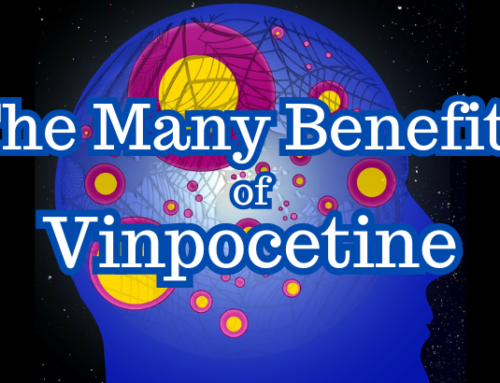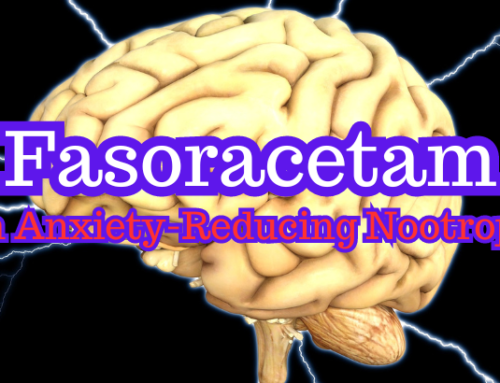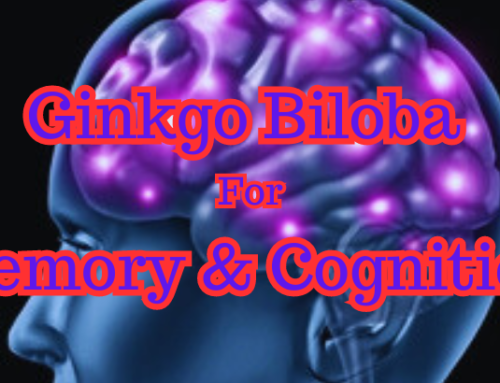Mushrooms have become very popular over the past few years for their many health benefits. As researchers continue to explore the medicinal properties of mushrooms, more and more of their benefits are becoming known.
One of the most exciting benefits of mushrooms is the effect they can have on the brain. Several different types of mushrooms have been shown to improve memory and mood, reduce anxiety, and increase focus and motivation.
In this post, we're going to be looking at some of the nootropic benefits of mushrooms. But before we get into the cognition-enhancing properties of mushrooms, let's first take a look at exactly what they are.
What Are Mushrooms?
Also known as toadstools, mushrooms are the fruiting body of a fungus that typically grow out of the ground. The term “mushroom” has been in use for at least 500 years.1 Its earliest known use dates back to the 1400s.
There are at least 10,000 known species of mushrooms.2 And researchers agree that there are likely many more that have yet to be discovered. Many of these species are edible. And several of them are known to have medicinal properties.
Mushrooms are extensively used in cooking around the world, especially in Chinese, Japanese, Korean, and European cuisine. Not only are many species of mushrooms tasty, they also contain a number of important nutrients. Raw brown mushrooms, for example, are packed with B vitamins, selenium, copper, zinc, and potassium.3
Some types of mushrooms have psychoactive properties. The most well known of these are psilocybin mushrooms. Also known as magic mushrooms or shrooms, they have been used for their psychedelic properties for thousands of years.4 Psilocybin mushrooms contain psilocin, a powerful psychedelic compound that can cause intense hallucinations.5 They have been used in traditional medicine and religious rituals around the world for thousands of years and continue to be used to this day.

Other types of mushrooms also have psychoactive properties but are not hallucinogenic. Some of them have been shown to improve one or more aspects of cognition including memory, mood, focus, anxiety, and motivation. Several types of these nootropic mushrooms have become incredibly popular over the past few years. And as more and more research gets done, there will likely be others that get discovered to have nootropic benefits.
Now, let's take a look at some mushrooms that are known to have nootropic properties.
The Nootropic Benefits Of Mushrooms
Over the past ten-or-so years, the popularity of nootropics has exploded, as has the popularity of mushrooms. So, it only makes sense that the popularity of nootropics mushrooms has dramatically increased, too. There are several types of mushrooms that are known to have nootropic benefits. Some of the benefits of nootropic mushrooms include:
- Increased focus

- Improved mood
- Reduced anxiety
- Improved memory
- Overall boost in cognitive performance
In addition to nootropic effects, several types of mushrooms also have other health benefits. Even though they might not enhance cognition directly, nootropic users often include them in their stacks. Some of the other effects of mushrooms that nootropic users take them for include:
- Anti-cancer effects
- Antioxidant effects
- Anti-stress effects
- Sexual health benefits
Below are a few types of mushrooms that are popular with nootropic users. They are all considered to be very safe and seem to work well for most people. While they can be effective when taken individually, many nootropic users like to stack several together for increased effectiveness.
1. Lion's Mane

A study done in 2010 showed that lion's mane mushrooms were able to improve mood and reduce anxiety.6 Researchers gave participants either lion's mane or a placebo for four weeks. The participants that were given lion's mane showed a significant reduction in depressive and anxious symptoms.
Another study published a year earlier showed that lion's mane was able to significantly improve cognitive functioning in elderly participants with mild impairment.7 Participants were either given Lion's Mane or a placebo. The participants that were given lion's mane showed significant improvement while those given placebo did not.
You can learn more about lion's mane here: The Nootropic Benefits Of Lion's Mane.
2. Cordyceps

Nootropic users find that cordyceps has a number of benefits including improved sleep, memory, and increased energy. Unfortunately, these benefits have not yet been studied in humans. However, there have been several animal studied that support these claims.
A study done on rats and mice from 2003 found that cordyceps had an anti-fatigue and anti-stress effect.9 The animals that were given a cordyceps extract were able to swim much longer than those that weren't. They also shows significantly less signs of fatigue than the ones that weren't.
A more recent study done in 2013 looked at the effect that cordyceps has on sleep.10 Rats that were given cordyceps had shortened sleep-wake cycles and also showed an increase in non-rapid eye movement (NREM) sleep. Electroencephalogram (EEG) results also showed that the rats given cordyceps had an increase in theta waves during NREM sleep. These types of brain waves are associated with relaxed, creative, and meditative states.11
You can learn more about cordyceps here: The Nootropic Benefits Of Cordyceps.
3. Reishi

This is because Reishi mushrooms are known to have a number of medicinal benefits, including anti-cancer and antioxidant effects. While these effects don't directly improve cognitive performance, they are often sought after by nootropic users. Not only is there thousands of years of history to support the use of Reishi mushrooms for these purposes, there's also a growing body of evidence to support these claims.
Several studies, including one from 2004, have shown Reishi mushrooms to have a potent antioxidant effect in humans.13 A detailed review from 2006 showed that there is a lot of evidence that shows the Reishi mushroom to have powerful antioxidant, anti-cancer, and other medicinal effects.14
A 2005 study looked at the effect Reishi mushrooms had on patients with neurasthenia.15 Though the term “neurasthenia” is rarely used today, this is a condition characterized by exhaustion, headaches, low energy, dizziness, muscle aches, irritability, sleep problems, and an inability to relax.16 The results of this study showed that Reishi mushrooms were able to significantly improve the symptoms of neurasthenia.
While Reishi mushrooms might not exert a nootropic effect on their own, they are quite popular with nootropic users. Between their antioxidant, anti-cancer, and other medicinal effects, people from around the world are adding Reishi mushrooms to their nootropic stacks.
4. Turkey Tail Mushroom

A 2012 study showed that Trametes versicolor, also known as the Turkey Tail Mushroom, had a powerful anti-cancer effect in women with breast cancer.17 The women receiving the mushrooms showed improvements in a number of different cancer-related biomarkers.
A review study from 2005 looked at the medicinal properties of several types of mushrooms and also found evidence to support using the Turkey Tail mushroom for its anti-cancer and antioxidant effects.18 For these reasons, users often include the Turkey Tail mushroom in their nootropic stacks.
5. Chaga

One of the benefits that nootropic users report from taking chaga is an anti-fatigue effect. While this hasn't yet been studied in humans, it has been looked at in animals. A 2015 study sought to find out if chaga had an anti-fatigue effect in mice.20 The researchers concluded that it did have such an effect in mice and that it may have similar benefits in humans.
Another animal study from 2011 showed that chaga can improve memory and learning.21 Mice that were given a chaga extract showed that in addition to having antioxidant effects, it also had memory-improving and learning-increasing benefits.
A lot of nootropic users like to include chaga in their stack for the reasons mentioned above. Not only is it known to have antioxidant effects, it also shows promise as a way to improve memory and learning.
Conclusion
When most people think about nootropics (assuming they know what they are at all), they usually aren't thinking about mushrooms. Things like modafinil, piracetam, and l-theanine are usually what comes to mind. But several types of nootropic mushrooms have become commonly used for their cognition-enhancing benefits.
Without question, the first two mushrooms on our list, lion's mane and cordyceps, are the most popular among nootropic users. But more and more users are including the others in their nootropic stacks. Many users have reported amazing benefits by including all five of them. Pure Nootropics, one of the Nootropic Zone's most-highly-rated online vendors, offer all five of the potent mushrooms discussed in this post.
Have you tried any of the nootropic mushrooms on our list? I'd love to hear about your experiences if you have. Please leave your experiences in the comments section at the bottom.
To learn more about nootropics, sign up for the Nootropics Zone newsletter. You'll get the free gift, The Ultimate Nootropics Quick Reference Guide.
References
1Ramsbottom, J. (1954). Mushrooms & toadstools: a study of the activities of fungi. London: Collins.
2How many edible/poisonous mushrooms are there? (n.d.). In Mushroom The Journal. Retrieved October 4, 2019 from http://www.mushroomthejournal.com/greatlakesdata/TopTen/Quest19.html
3Mushroom. (n.d.). In Wikipedia. Retrieved October 4, 2019 from https://en.wikipedia.org/wiki/Mushroom
4Akers, B. (2011). A prehistoric mural in Spain depicting neurotropic psilocybe mushrooms? Economic Botany, 65(2):121-128.
5Psilocybin Mushroom. (n.d.). In Wikipedia. Retrieved October 4, 2019 from https://en.wikipedia.org/wiki/Psilocybin_mushroom
6Nagano, M., Shimizu, K., Kondo, R., Hayashi, C., Sato, D., Kitagawa, K., & Ohnuki, K. (2010). Reduction of depression and anxiety by 4 weeks Hericium erinaceus intake. Biomedical Research, 31(4):231-237.
7Mori, K., Inatomi, S., Ouchi, K., Azumi, Y., & Tuchida, T. (2009). Improving effects of the mushroom Yamabushitake (Hericium erinaceus) on mild cognitive impairment: a double-blind placebo-controlled clinical trial. Phytotherapy Research, 23(3):367-372.
8Yue, K., Ye, M., Zhou, Z., Sun, W., & Lin, X. (2012). The genus cordyceps: a chemical and pharmacological review. Journal of Pharmacy and Pharmacology, 65(4):474-493.
9Koh, J., Kim, K., Kim, J., Song, J., & Suh, H. (2003). Antifatigue and antistress effect of the hot-water fraction from Mycelia of Cordyceps sinensis. Biological & Pharmaceutical Bulletin, 26(5):691-694.
10Hu, Z., Lee, C., Shah, V., Oh, E., Han, J., Bae, J., et at. (2013). Cordycepin increases nonrapid eye movement sleep via adenosine receptors in rats. Evidence-Based Complementary and Alternative Medicine, vol. 2013, Article ID 840134:8 Pages.
11Cahn, B., & Polich, J. (2006). Meditation states and traits: EEG, ERP, and neuroimaging studies. Psychological Bulletin, 132(2):180-211.
12Lingzhi mushroom. (n.d.). In Wikipedia. Retrieved October 5, 2019 from https://en.wikipedia.org/wiki/Lingzhi_mushroom
13Wachtel-Galor, S., Szeto, Y., Tomlinson, B., & Benzie, I. (2004). Ganoderma lucidum (‘Lingzhi'); acute and short-term biomarker response to supplementation. International Journal of Food Sciences and Nutrition, 55(1):75-83.
14Russell, R., & Paterson, M. (2006). Ganoderma – a therapeutic fungal bio factory. Phytochemistry, 67:1985-2001.
15Tang, W., Gao, Y., Chen, G., Gao, H., Dai, X., Ye, J., Chan, E., Huang, M., & Zhou, S. (2005). A randomized, double-blind and placebo-controlled study of a Ganoderma lucidum polysaccharide extract in neurasthenia. Journal of Medicinal Food, 8(1):53-58.
16Schwartz, P. (2002). Why is neurasthenia important in Asian cultures? Western Journal of Medicine, 176(4):257-258.
17Torkelson, C., Sweet, E., Martzen, M., Sasagawa, M., Wenner, C., Gay, J., Putiri, A., & Standish, L. (2012). Phase 1 clinical trial of Trametes versicolor in women with breast cancer. ISRN Oncology, Published online May 30, 2012.
18Zaidman, B., Yassin, M., Mahajna, J., & Wasser, S. (2005). Medicinal mushroom modulators of molecular targets as cancer therapeutics. Applied Microbiology and Biotechnology, 67(4):453-68.
19Ko, S. Jin, M., & Pyo, M. (2011). Inonotus obliquus extracts suppress antigen-specific IgE production through the modulation of Th1/Th2 cytokines in ovalbumin-sensitized mice. Journal of Ehtnopharmacology, 137(3):1077-1082.
20Xiuhong, Z., Yue, Z., Shuyan, Y., & Zhonghua, Z. (2015). Effect of Inonotus obliquus polysaccharides on physical fatigue in mice. Journal of Traditional Chinese Medicine, 35(4):468-472.
21Giridharan, V., Thandavarayan, R., & Konishi, T. (2011). Amelioration of scopolamine induced cognitive dysfunction and oxidative stress by Inonotus obliquus – a medicinal mushroom. Food & Function, 2(6):320-327.
[This article was originally published on October 11, 2019. Updated March 31, 2023.]







Leave a Reply